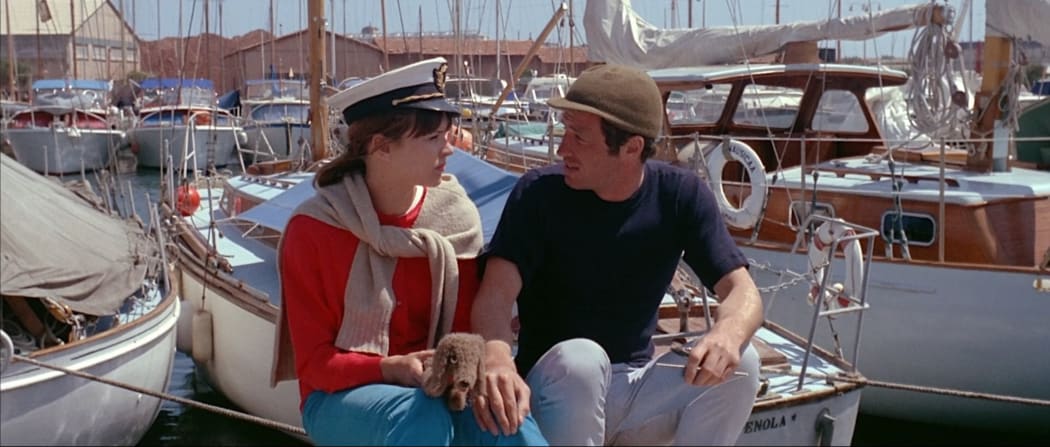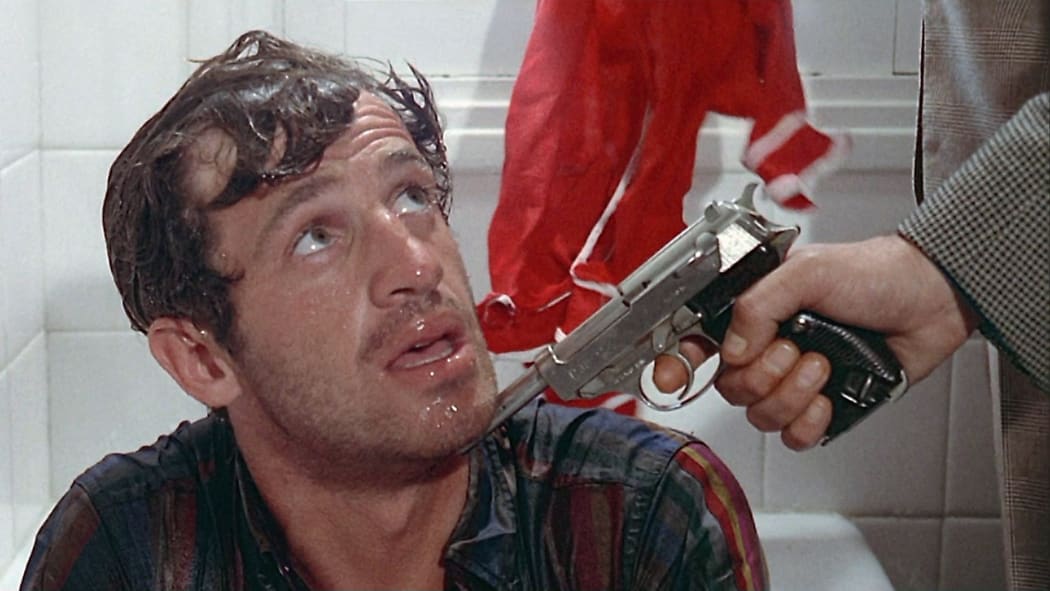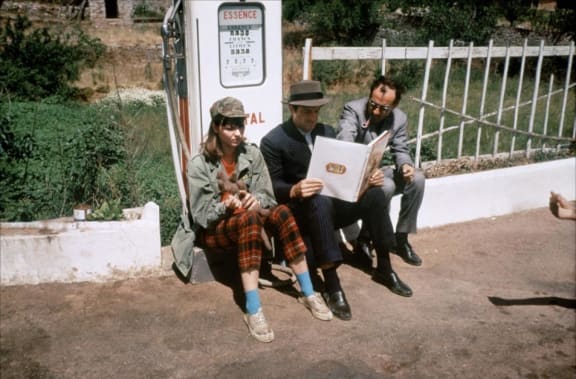The '60s ennui has never looked cooler than in Godard’s swansong to “commercial” cinema, according to Dan Slevin.

Anna Karina and Jean-Paul Belmondo look gorgeous in Godard’s Pierrot le Fou (1965). Photo: Umbrella
Back in 2017, I embarked on a project to watch and review the top 50 films in the Sight & Sound Magazine list of the 100 best films of all time (according to a poll of critics taken in 2012). I got through nine of them before life intervened and the project fizzled out but, with classic cinema struggling for attention even more these days, I feel that it is even more important that we help steer audiences towards them. After all, the movies we watch today whakapapa back to these great films and watching them will increase our appreciation of all cinema.
So, counting down from 50 we reach 43= (equal with Gertrud, Playtime, Some Like It Hot and Close-up), this week’s entry is the Godard puzzler Pierrot le fou (or Crazy Pete).
This is Jean-Luc Godard’s second entry in the top 50 – Histoire(s) du cinéma at #48 is still proving extremely difficult to track down – and there are two more to go putting him right up there with directors like Hitchcock and Kurosawa.

Photo: Umbrella
By 1965, Godard had become disillusioned even with the radical (to traditional viewers) approach to narrative, editing, story and character.
Breathless had launched him on an unsuspecting world but eight films later – including classics like Une femme est une femme, Le Mépris, Bande à part and Alphaville – he was feeling in a rut. Even the relative commercial success of those films made him feel like he was pandering to an audience when his attention was being increasingly drawn to the political scene and even more experimental modes of film..
Pierrot le Fou, loosely based on a novel by American crime writer Lionel White, took a while to come together and by the time shooting started Godard’s heart wasn’t really in it. His first choices for casting the outlaw couple – Sylvie Vartan and Richard Burton – had been nixed and he was forced to cast his wife Anna Karina even though they were in the process of a not amicable separation at the time.

Karina, Belmondo and Godard on the set of Pierrot le Fou. Photo: Umbrella
Jean-Paul Belmondo (who Godard had turned into a star in Breathless) returned to play alongside her as Ferdinand, the depressed Parisian executive who finds himself embroiled in a cross country crime spree when he hooks up with an ex-girlfriend (Karina) who is on the run from the mob.
On their way from Paris to the Riviera (actually shot in reverse order, befitting the improvisational nature of the story), there is a lot of philosophising and the occasional bit of action as they get into and out of scrapes.
The general sense of ‘don’t give a stuff’-ness is typified by the scene below where they drive a beautiful Ford Galaxie into the ocean. The car is Godard’s own.
Very much a product of its time, Pierrot le Fou is preoccupied with the politics of ennui, the inevitable self-destruction of the bourgeoisie and the colonial wars in Indochina. The two leads are gorgeous and charismatic – despite it all – and the MVP is Raoul Coutard’s glorious widescreen colour cinematography. In high definition it really glows and, if you ever get a chance to see it on the big screen (in one of those film festival or film society revivals) you really should because '60s ennui has never looked better.
The local release Blu-ray of Pierrot le Fou is no longer available (officially) but there is an imported boxed set containing the film and several other of Godard’s New Wave highlights for a very reasonable price. You can rent the film on Blu from Alice in Christchurch (which is what I did) or you should be able to find it on DVD at your local library as well as Aro Street in Wellington.
If you want to try your luck online, the only streamer I could find was a rental ($4.99) at Google Play.
Dan Slevin is working his way through the 2012 Sight & Sound Critics Top 50 Films of all time, from 50 to 1. The Sight & Sound Top 50 project is intended to encourage more attention to the greatest films of the past – in the same way we still read old books and listen to old music we should be appreciating old movies.

